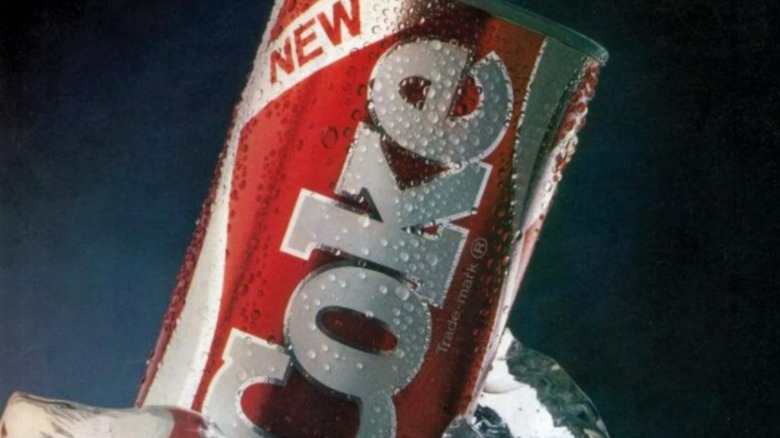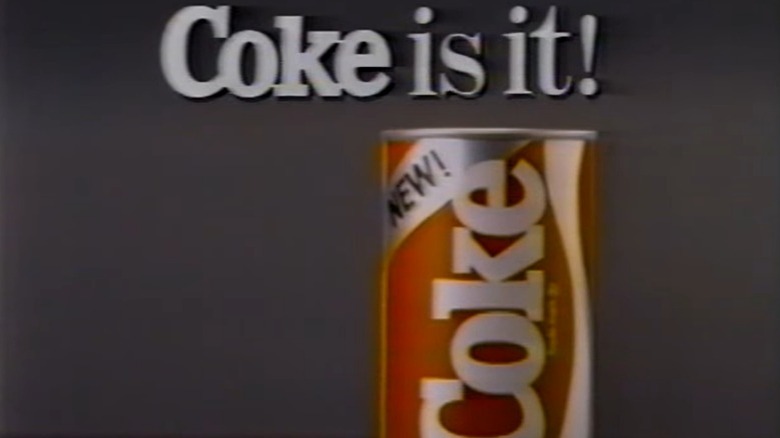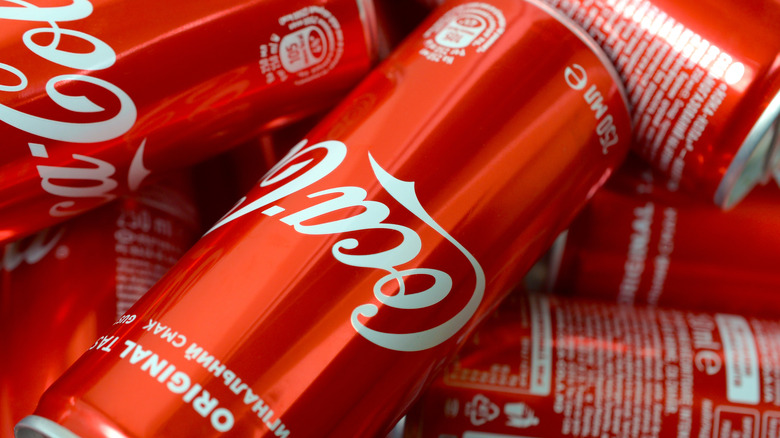What Made New Coke A Disaster?
Whether it comes in an aluminum can or a glass bottle, Coca-Cola is so commonplace in grocery stores, restaurants, and kitchens that we hardly take a second glance at it. Coca-Cola estimates that 1.9 billion servings of its product are served every day across 200 countries, with Market.us reporting that Americans drink an average of 399 servings of Coke or Coke-based products per year. It's so common a drink that one would almost assume we take it for granted. Could you imagine what would happen if, by some act of divine intervention, the Coca-Cola we all knew and loved suddenly became something completely different? Enter New Coke.
In a move that TIME Magazine bluntly described as being akin to "putting a miniskirt on the refurbished Statue of Liberty," Coca-Cola made the bold announcement in 1985 that it was going to change the classic Coca-Cola formula. The new flavor was sweeter than the old version of Coke that Americans were so used to drinking. According to CBS News, "New Coke" was meant to be a direct stand against rival Pepsi, a move that would shake up the soda market like a soda can in the hands of an overexcited toddler. The concept itself was solid — if people liked Coke before, they'll absolutely love New Coke.
But imagine the surprise of Coca-Cola's marketing research team when New Coke would become a symbol of a total corporate blunder.
New Coke messed with a good thing
After the debut of New Coke, Coca-Cola enthusiasts took to the streets in protest, forming grassroots movements, flooding the company call center (so much that Coke had to hire extra operators to deal with the thousands of furious calls), and even began dumping can after can of New Coke down sewer grates (via HISTORY). It seems that New Coke caused such an uproar that Americans united in change to push back against one of the biggest soda juggernauts in the country.
Despite the outcry, however, New Coke didn't taste all that bad. In fact, according to Mother Jones, many really couldn't tell the difference between Old Coke and New Coke. The pushback wasn't against New Coke, per se, but instead a rebellion against the idea of change itself. New Coke itself was fine, but the American people simply preferred the classic, familiar taste of the old Coca-Cola. Old Coke was something of an American staple, and the idea that such a classic symbol of American consumerism and business could be changed so easily rattled many.
However you see it, the people had spoken: New Coke had to go.
Coca-Cola quickly brought Classic Coke back
Whether New Coke was hated because it was new, different, or just a complete change to something many considered to be as American as mom and apple pie, only one solution to the New Coke problem was clear. Coca-Cola had to bring back the old Coke.
On July 10, 1985, just 79 days after New Coke was first launched, Coca-Cola brought back the original formula, rolling out what it called "Coca-Cola Classic" (or just the original Coke in a new can). Coca-Cola, for its part, seems to have accepted the disastrous launch of New Coke, humbly agreeing that perhaps it wasn't a great idea to change something that so many Americans loved. TIME Magazine, 30 years after making its bold statement that changing the Coca-Cola formula was like dressing the Statue of Liberty in a miniskirt, reflected on lessons learned from the New Coke debacle. The publication explained that perhaps Coca-Cola overestimated just how well people would accept the change of something so near and dear to their hearts.
After all, a soda that can be found everywhere from a small town McDonald's to a vending machine in a skyscraper in a sprawling metropolis would no doubt have worked its way into being a beloved, steadfast symbol, and for some, a lifestyle.


